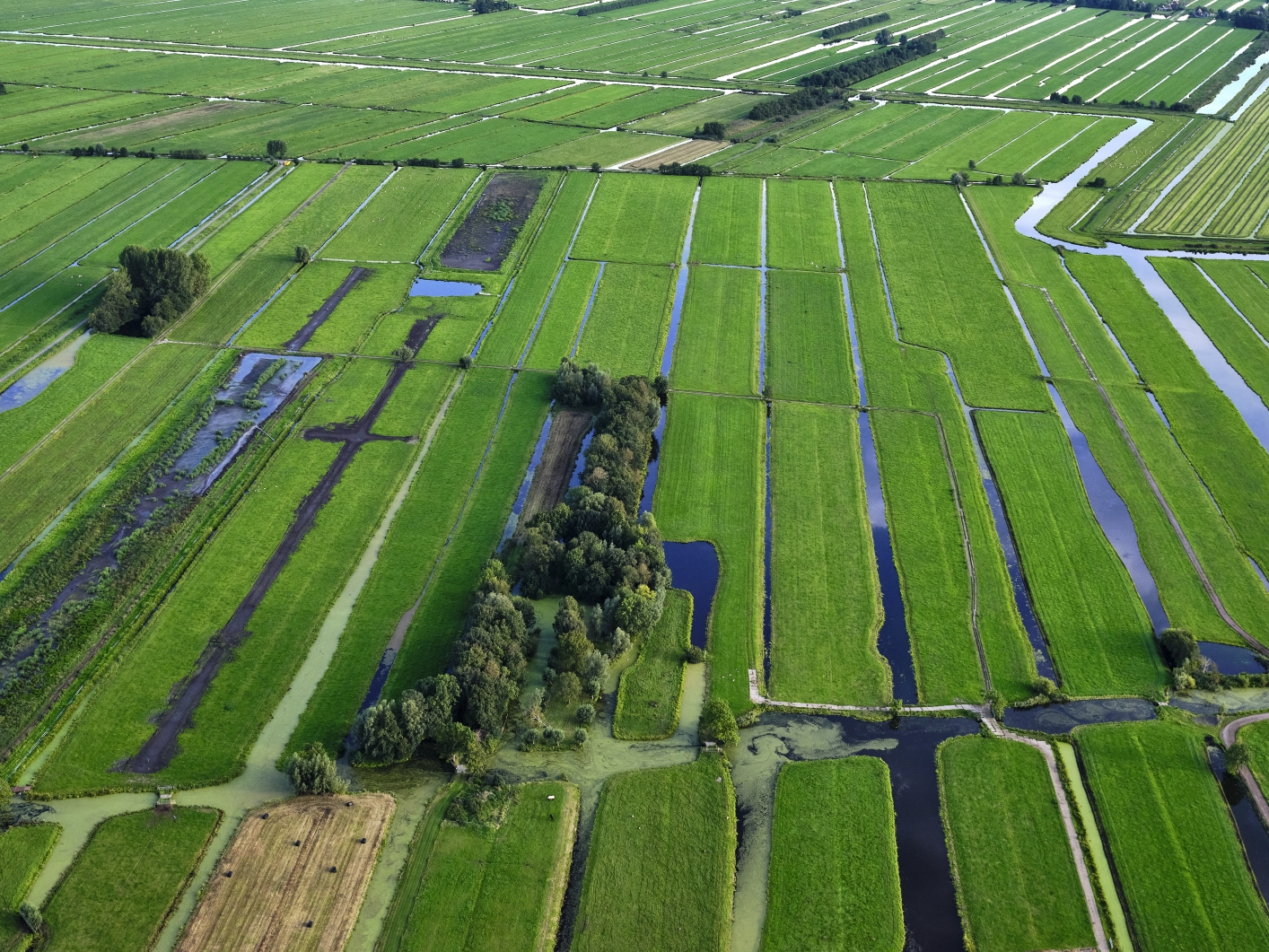
Background and main question
The land in rural peat meadow areas is subsiding. This is mainly a result of the water level being lowered to make the land suitable for agricultural use. Lowering the water level results in peat oxidation, which in turn causes the land to subside. Land subsidence leads to mounting problems, such as CO2 emissions and a deterioration in the quality of the water and the natural environment. It also increases the costs of water management. Continuing on the path of dewatering, resulting in continuous land subsidence and CO2 emissions, is economically, ecologically and socially irresponsible in the long term. In view of the need to counter climate change and reduce CO2 emissions (including emissions from peat), reducing land subsidence is actually unavoidable. The question to be addressed in this advisory report is: what choices have to be made to counter the negative effects of land subsidence in rural peat meadow areas and who should make those choices?
In this advisory report, land subsidence in peat meadow areas is discussed using the example of the ‘Green Heart’, an area of open countryside situated between the Netherlands’ four largest cities. However, many of the findings and conclusions in the advisory report are also applicable to peat meadow areas outside the Green Heart.
Explanation
The Council is of the view that the downward spiral of lowering water levels, peat oxidation and land subsidence must be stopped. Countering land subsidence requires a transition in the water management of peat meadow areas, from lowering water levels to raising them. The national government must provide clear direction for this transition – something it is currently doing insufficiently. The recommendations are as follows:
National policy framework and national goals for reducing land subsidence
The Council recommends a mandatory 50% reduction in land subsidence by 2030 and an indicative target of a 70% reduction in land subsidence by 2050. These targets derive directly from the obligations under the Dutch Climate Act. The Council believes that the targets should be part of a national policy framework on land subsidence, to be drawn up as part of the National Strategy on Spatial Planning and the Environment. The targets should also be laid down in legislation based on the Environment and Planning Act. In 2030, it will be possible to consider more closely whether the indicative target for 2050 needs to be adjusted and which instruments are necessary in order to reach that target.
Area-based implementation
The Council advocates a regional, area-based approach for implementing policy on land subsidence. In consultation with interested parties, provinces should draw up zoning maps to set priorities for different areas. The actual implementation can best be carried out in the areas themselves. For this reason, the Council proposes that regional implementation assemblies be established. These assemblies can be aligned with existing cooperation initiatives. It goes without saying that the water authorities have a key role to play in this implementation.
Funding the transition
For farmers in the peat meadow areas, a rising water level can have far-reaching consequences, as it will inevitably lead to ‘rewetting’ of their land. In many cases, they will have to adapt their business operations to the new situation, for example through extensification, with fewer head of livestock per hectare and/or different crops. They must be supported in this by the government, both financially and with know-how. The Council recommends the creation of a financing system in which farmers can be paid, for example by companies, for the reductions in CO2 emissions that they achieve beyond the current climate agreements for peat meadow areas. The Council also advises the national government to make a conversion premium available to farmers and to provide an implementation budget for restructuring peat meadow areas.
Investing in a knowledge base, monitoring and information
Finally, a solid knowledge base on land subsidence is essential. The Council therefore advises the national government to continue investing in research on land subsidence and to create a national information service. In addition, a national monitoring network is needed to monitor the national target for reducing land subsidence. Furthermore, the Council thinks it is important for the national government to set up an information centre where farmers can obtain information and advice on adapting their business operations.
Research report
In preparation for the advisory report, the Council commissioned a study of rewetting in the Green Heart area, in relation to the cost price of milk and the CO2 price. The research was carried out by Wageningen Economic Research (Daatselaar & Prins, 2020). The final report by WEcR can be downloaded here (pdf) only available in Dutch.
Publication
On 3 September 2020, the Council presented its advisory report ‘Stop land subsidence in peat meadow areas’ [‘Stop bodemdaling in veenweidegebieden’] to the Minister of the Interior and Kingdom Relations, Kajsa Ollongren, and the Minister of Agriculture, Nature and Food Quality, Carola Schouten.
Further information
If you wish to respond or would like more information, please contact project leader Lianne van Duinen, at Lianne.vanduinen@rli.nl